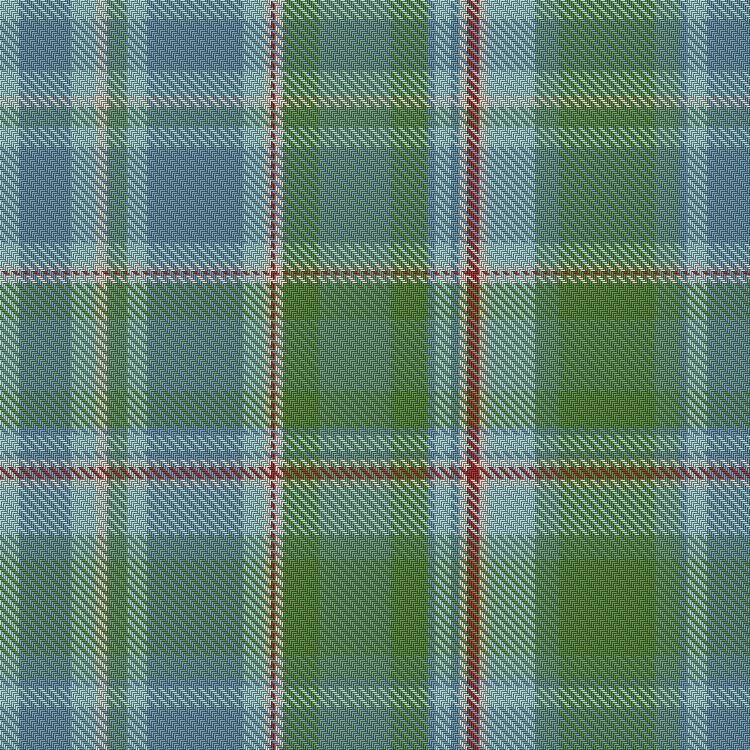Click the tartan to view its entry in The Scottish Registers of Tartans which includes registration details, restrictions, and registrant information.
Unregistered tartans may link to one of the web's online design environments for similar information.
For any questions about reproduction of designs or weaving of these tartans, please contact the registrant directly or via this website.
Mermaid Day
"Since once I sat upon a promontory
And heard a mermaid on a dolphin’s back
Uttering such dulcet and harmonious breath
That the rude sea grew civil at her song
And certain stars shot madly from their spheres To hear the seamaid’s music."
~ A Midsummer Night's Dream, William Shakespeare, 1595/96
In Welsh, the word morddyn refers to the merman, the male counterpart of the mermaid. Unlike their alluring female counterparts, mermen were often depicted as having green, seaweed-like hair, skin, and teeth, narrow eyes, and a bright red nose. In Medieval Europe, mermen were sometimes blamed for violent storms and shipwrecks, though they also possessed a captivating side. Their hauntingly beautiful singing voices were said to lure human women, weaving tales of seduction and enchantment.
Scottish folklore introduces us to the ceasg, a mermaid with the upper body of a strikingly beautiful woman and the tail of a grilse (a young salmon). Known in Scottish Gaelic as maighdean na tuinne (“maid of the wave”) or maighdean mhara (“maid of the sea”), the ceasg was said to dwell not only in the sea but also in rivers and streams. Capturing a ceasg could grant the captor three wishes. Legends tell of marriages between humans and ceasg, with some famed maritime pilots claiming descent from such unions. Even after returning to the sea upon their human partner's death, ceasg were believed to continue protecting their descendants, guiding them to safe harbors during storms or to the richest fishing grounds. Splish splash! 💚 💙 🤍 🧡 💛 🧜♂️ 🌊 🧜♀️
On this day, January 9th in 1493, Italian explorer Christopher Columbus, sailing near the Dominican Republic, saw three “mermaids” which were in reality sea cows (manatees) and described them as “not half as beautiful as they are painted.”
Mermaid sightings by sailors, when they weren’t invented for story-telling, were most likely manatees, dugongs or Steller’s sea cows (which became extinct by the 1760s due to over-hunting).
According to the designer:
"This tartan was created as a totemic pattern for fishermen, mariners, sailors, and any person wishing to have a little bit of the magic of the seas and oceans with them. Within its blue green ever moving waters is a small flare of the fire of life the guardian angel gives to those who need it or ask for it. The tartan is named 'morddyn' which means 'merman' in Welsh."
Mermaids appear in the folklore of many cultures worldwide, including the Near East, Europe, Africa and Asia. Mermaids are sometimes associated with perilous events such as floods, storms, shipwrecks and drownings. In other folk traditions (or sometimes within the same tradition), or they can be benevolent or beneficent, bestowing boons or even falling in love with humans.
Mermen are mythical male equivalents and counterparts of mermaids – legendary creatures who have the form of a male human from the waist up and are fish-like from the waist down, having scaly fish tails in place of legs.
For a selection of different mermaid legends from many Scotland, France, Russian, New Zealand, and more, click the mermaid picture by Elenore Plaistad Abbott, 1922.







